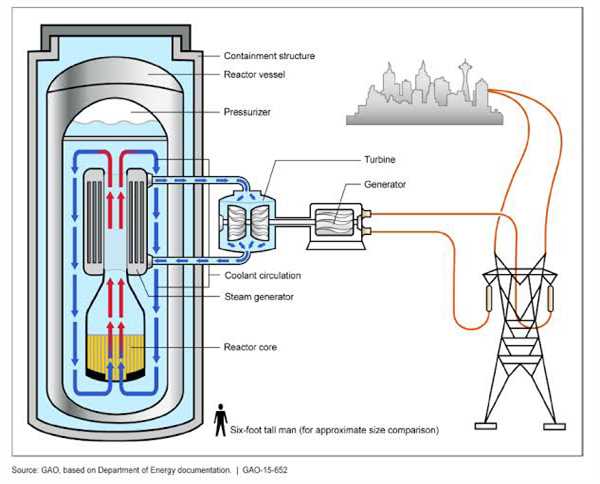Advanced nuclear reactors called small modular reactors (SMRs) have a power capacity of up to 300 MW(e) per unit, which is roughly one-third of the producing capacity of conventional nuclear power reactors. SMRs are able to generate a significant amount of low-carbon electricity.

Physically, it is much smaller than a typical nuclear power reactor. Modularity enables systems and components to be pre-assembled in a factory before being shipped as a whole to a place for installation.
Reactors use heat produced by nuclear fission to produce energy.
The tiny and modular nature of SMRs' design is inextricably related to several of its advantages. SMRs can be placed in regions unsuitable for larger nuclear power facilities due to their reduced footprint. SMRs are less expensive to build than large power reactors because prefabricated units can be produced, shipped, and then installed on site.
Large power reactors are frequently specially designed for a specific location, which can sometimes cause construction delays. SMRs are more affordable, take less time to build, and may be installed gradually to keep up with rising energy demand.
The development of SMR technology is being aggressively pursued by both governmental and private organisations this decade. Two 35 MW(e) SMRs are used to generate electricity at Russia's Akademik Lomonosov, the first floating nuclear power plant in history to start operating commercially in May 2020. In Argentina, Canada, China, Russia, South Korea, and the United States of America, further SMRs are being built or are awaiting authorization.
Around the world, more than 70 commercial SMR designs are in development. These designs aim to produce a variety of outputs for a variety of applications, including electricity, hybrid energy systems, heating, water desalination, and steam for industrial uses. Even though SMRs offer lower upfront capital costs per unit, their economic viability has yet to be demonstrated once they have been put into use.